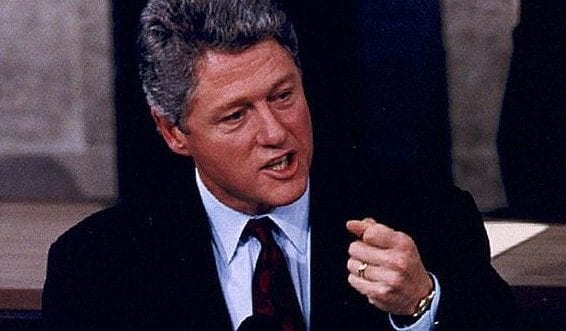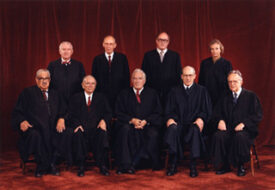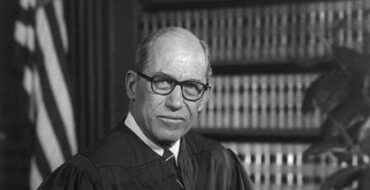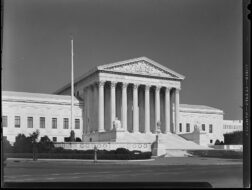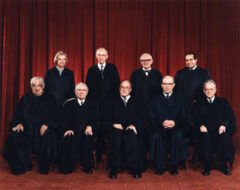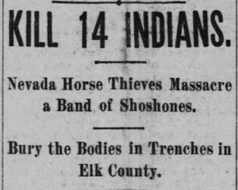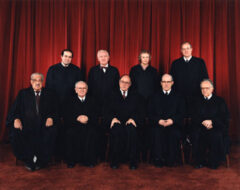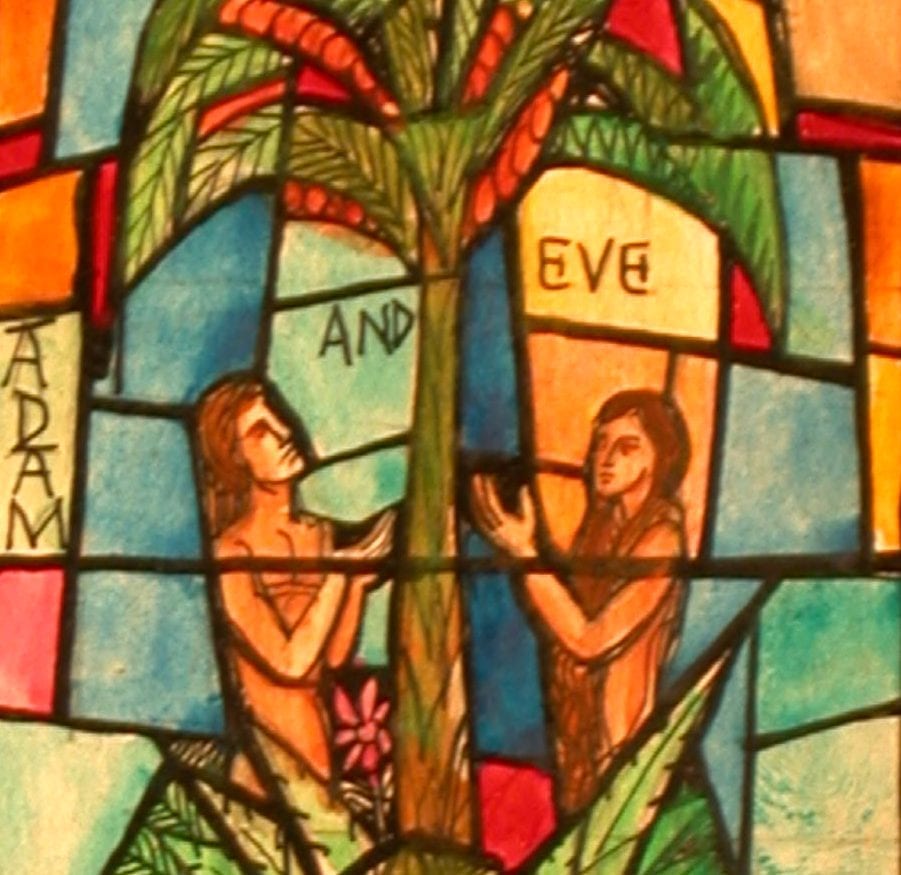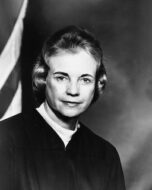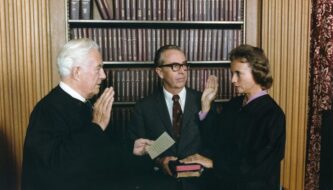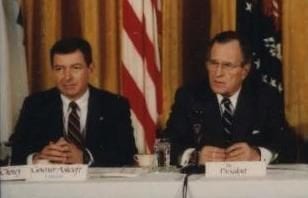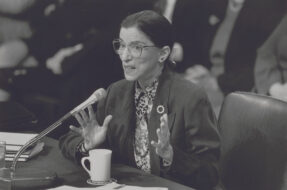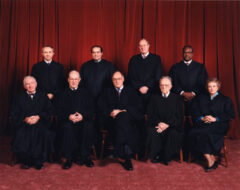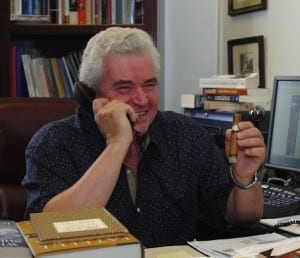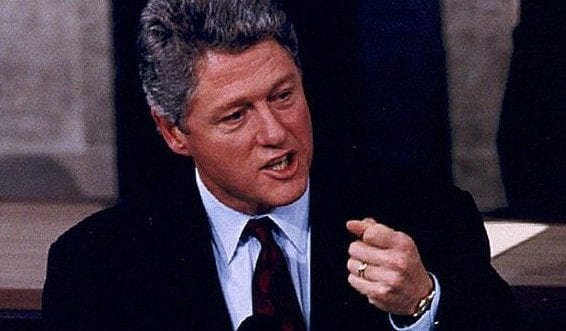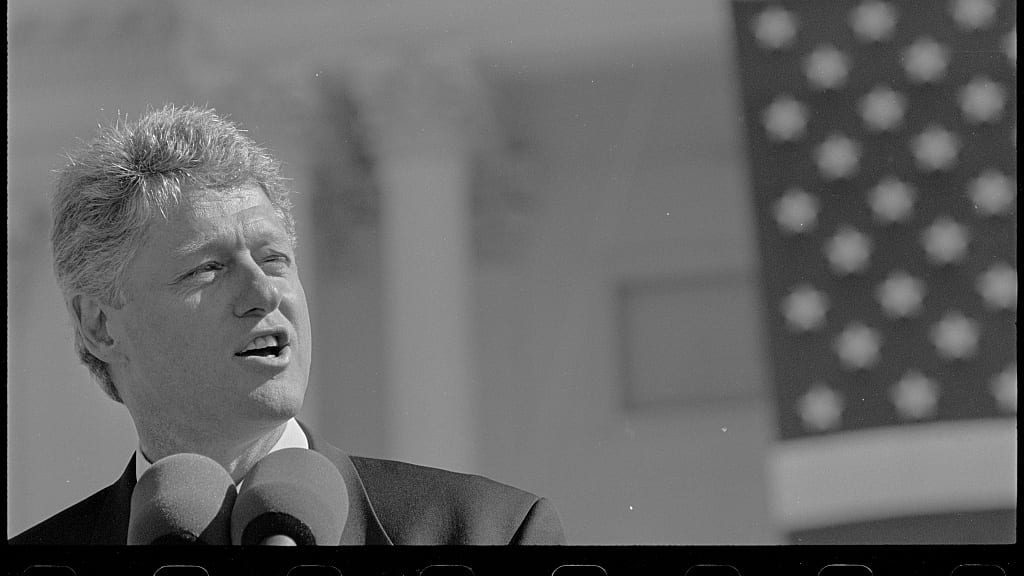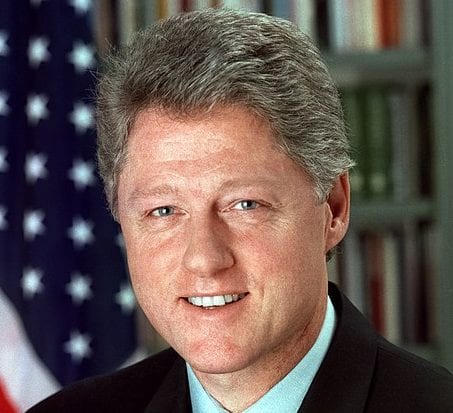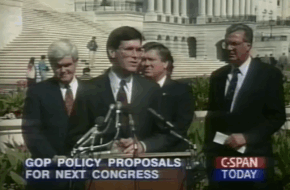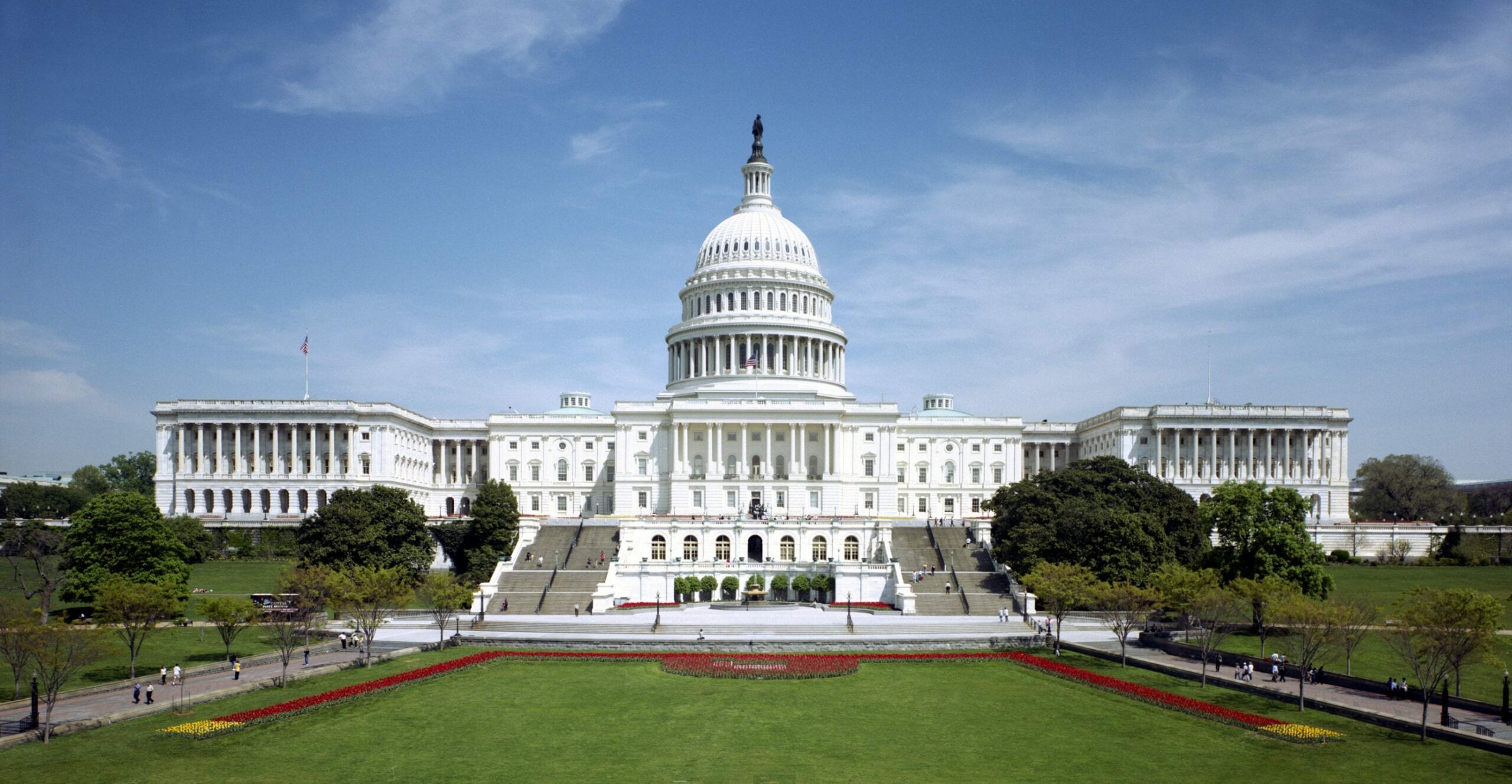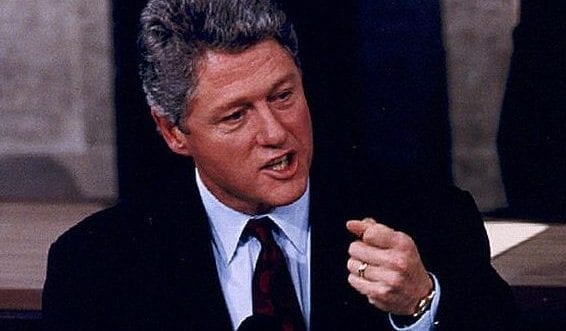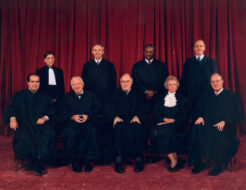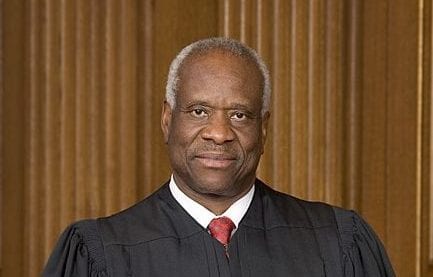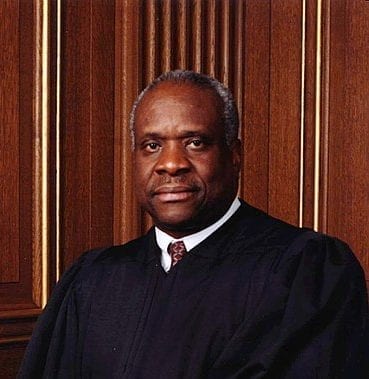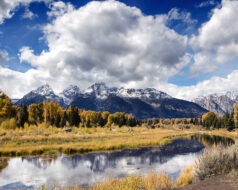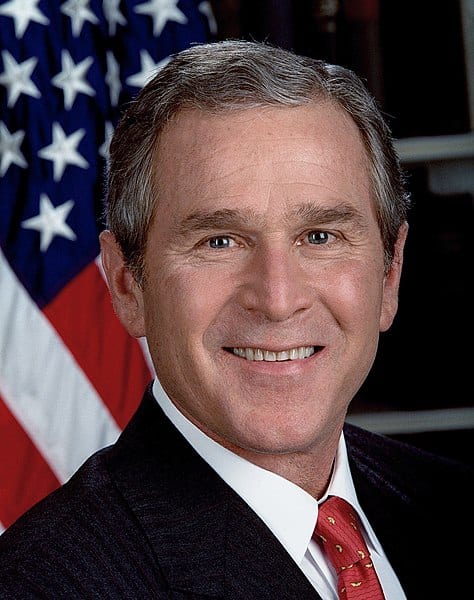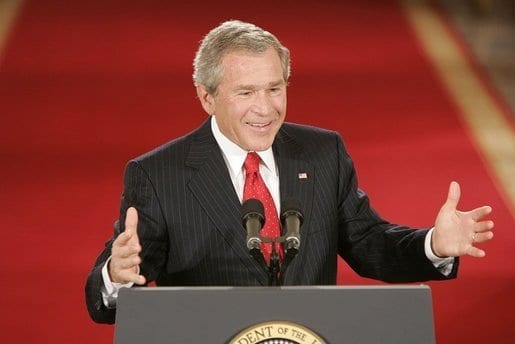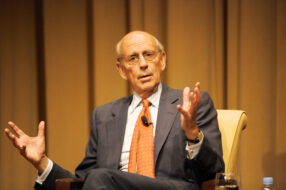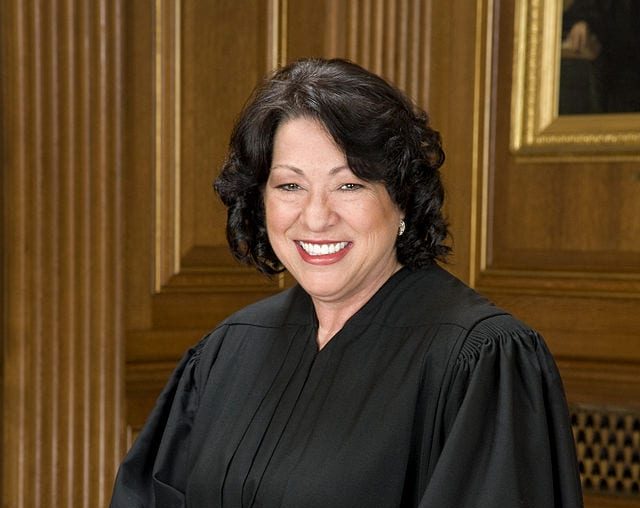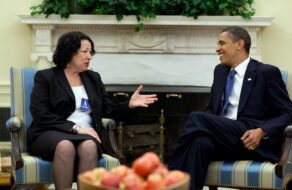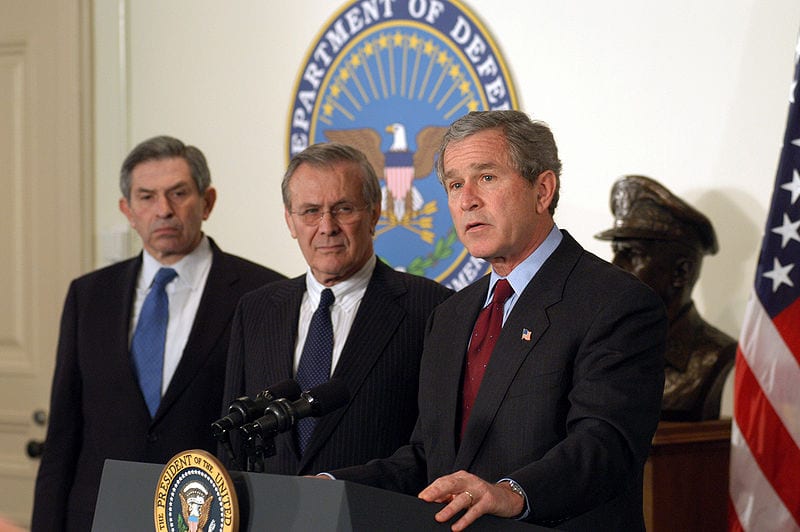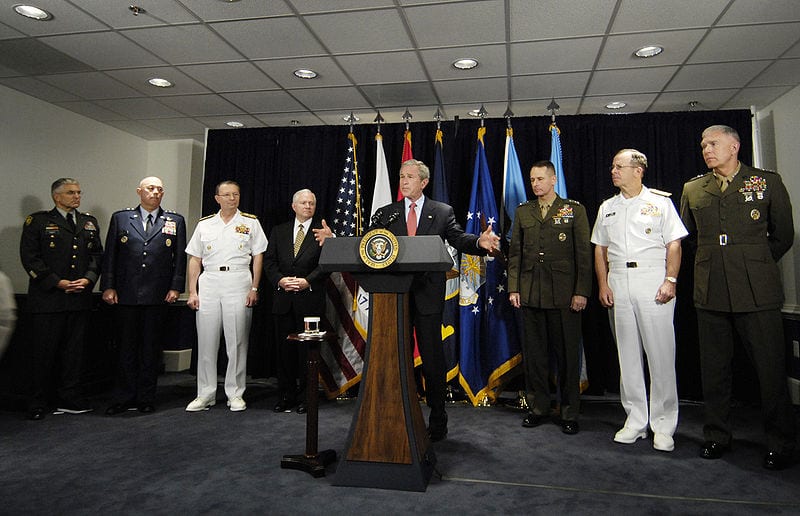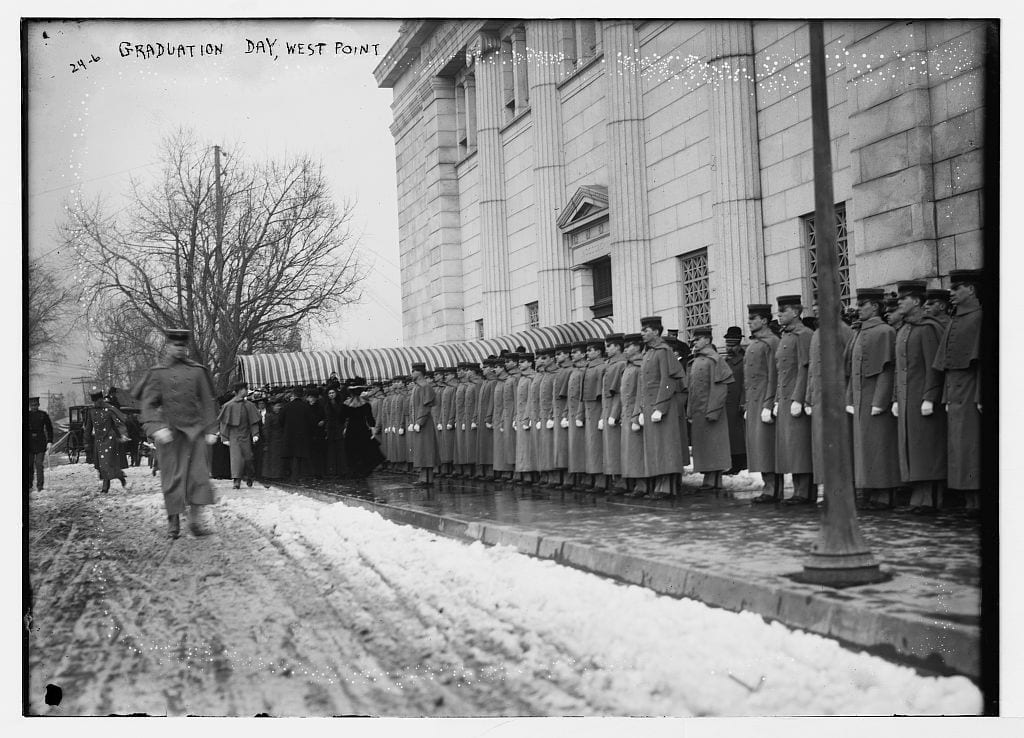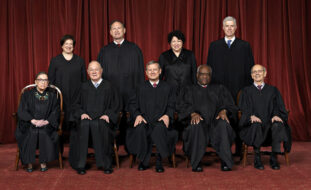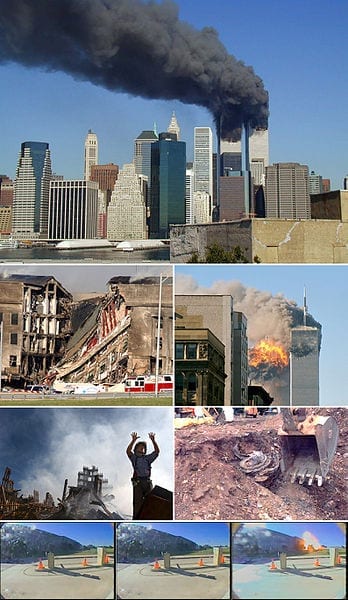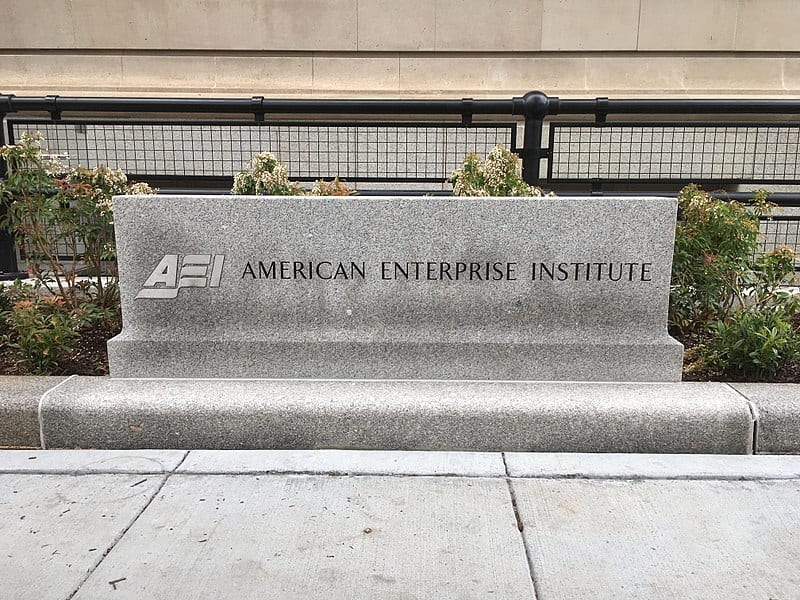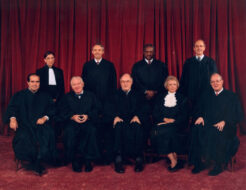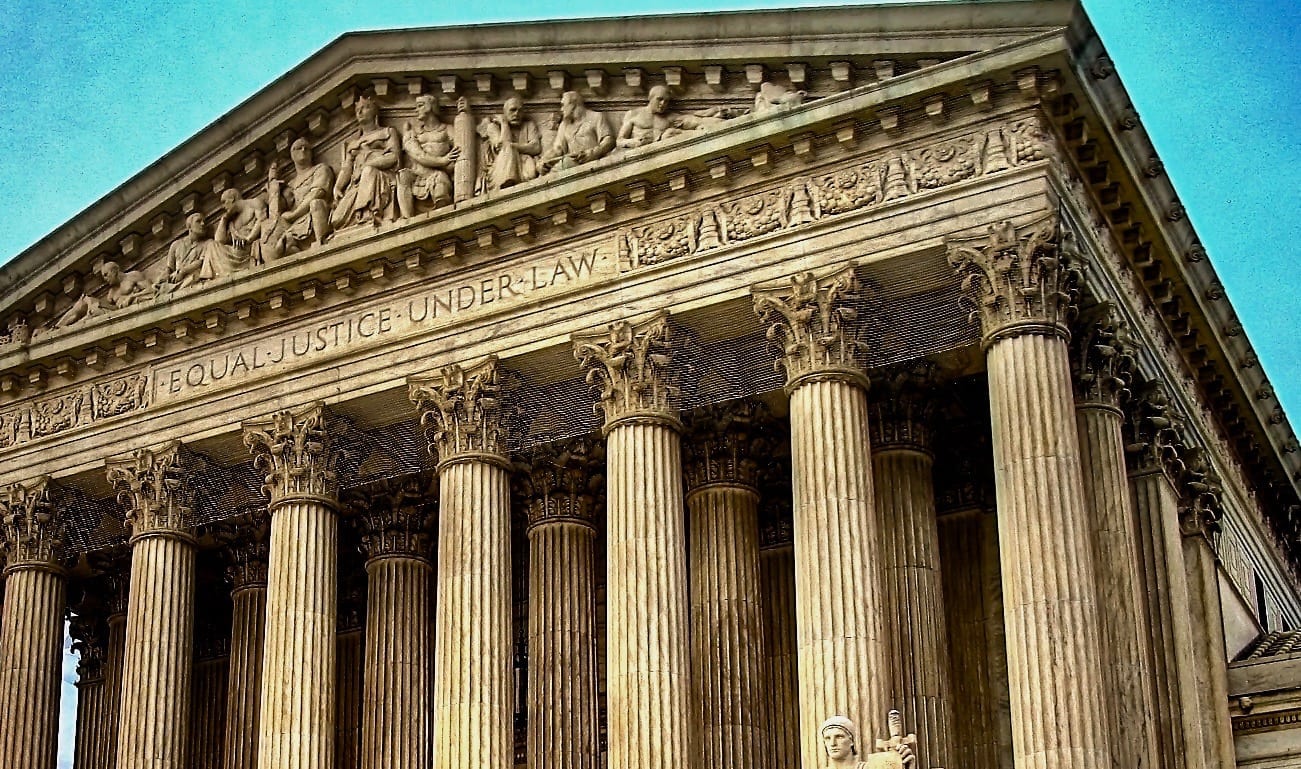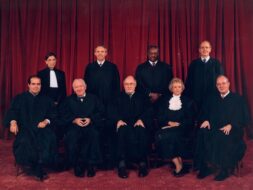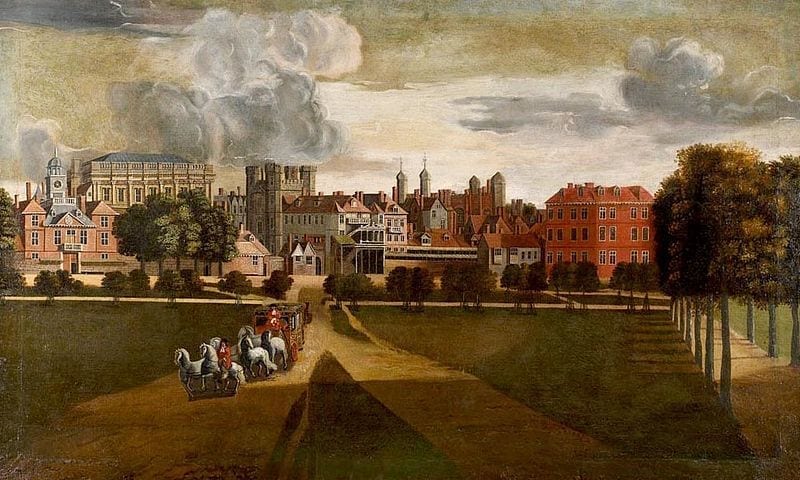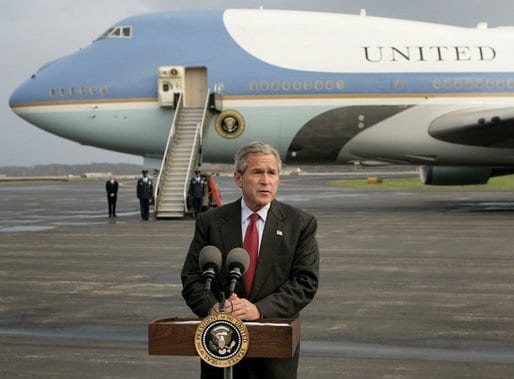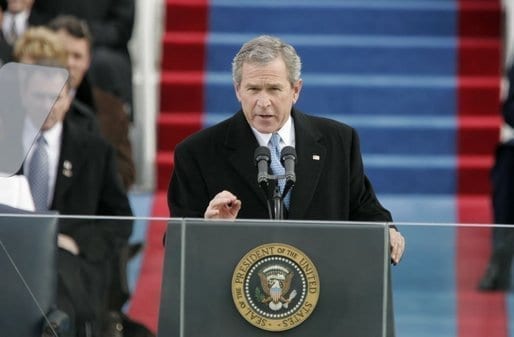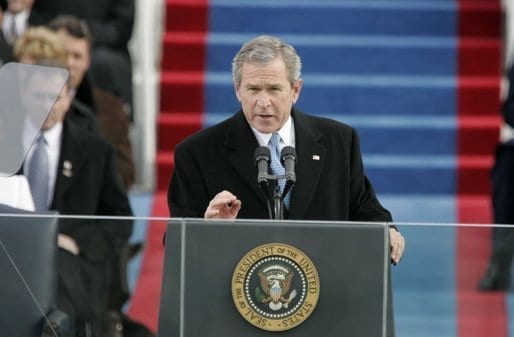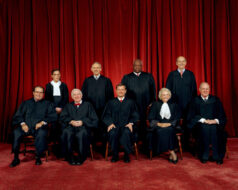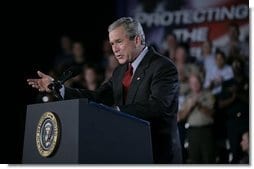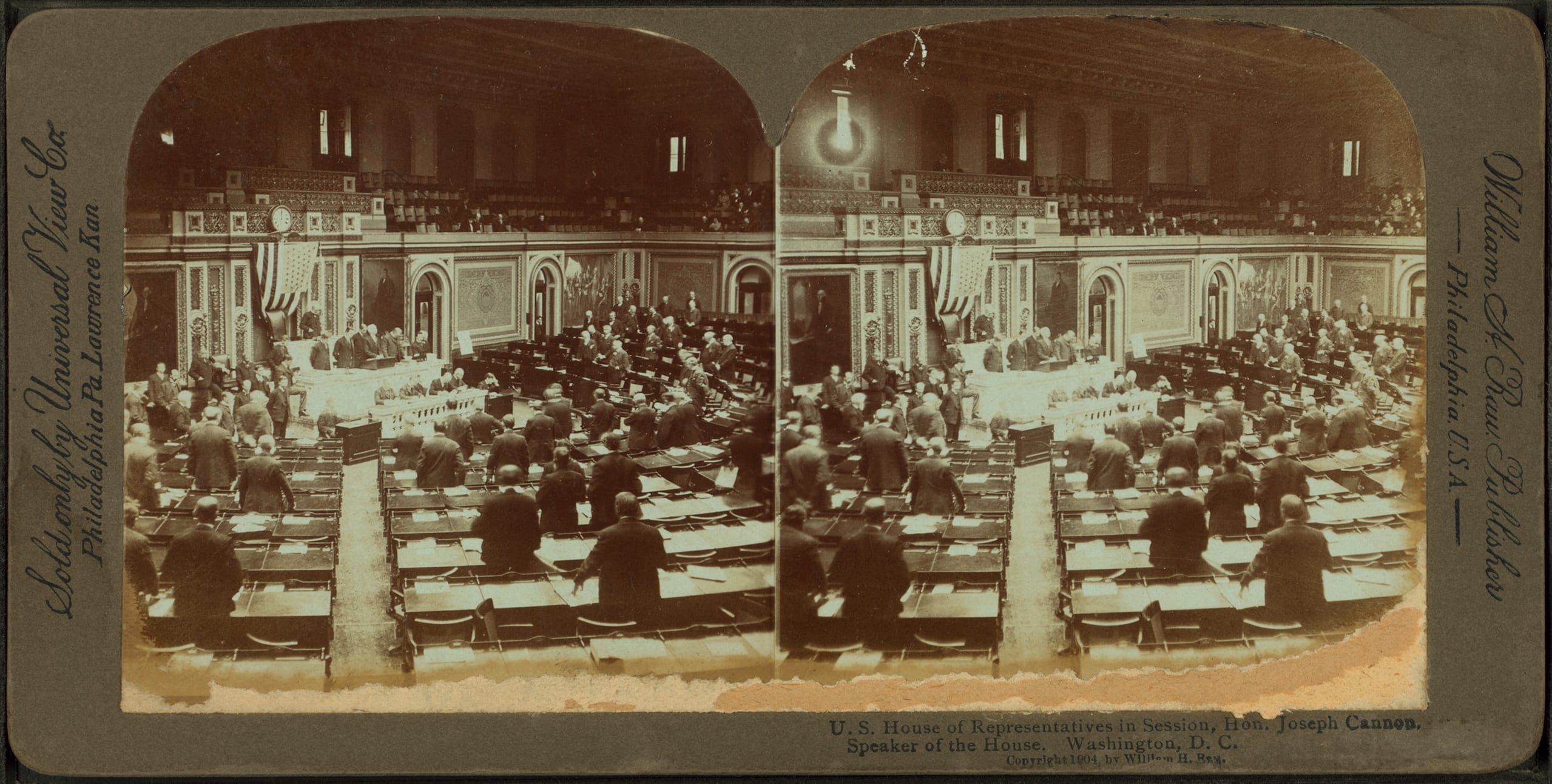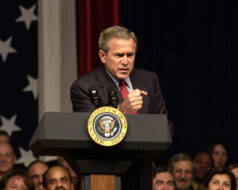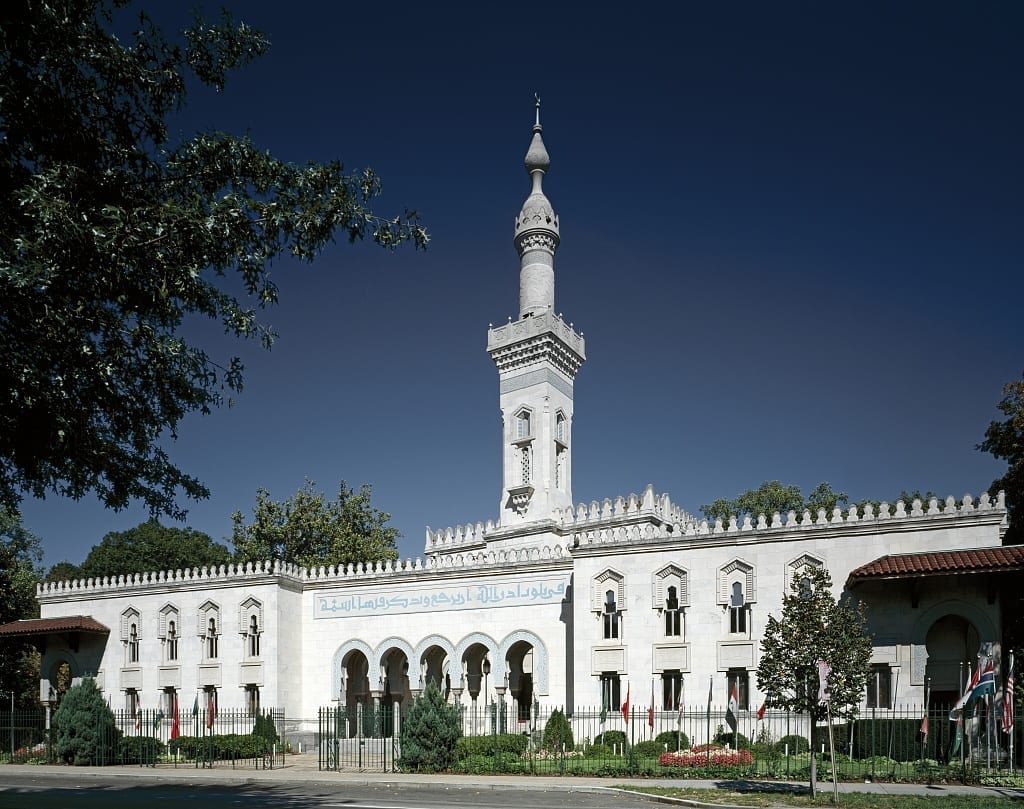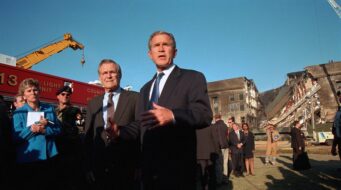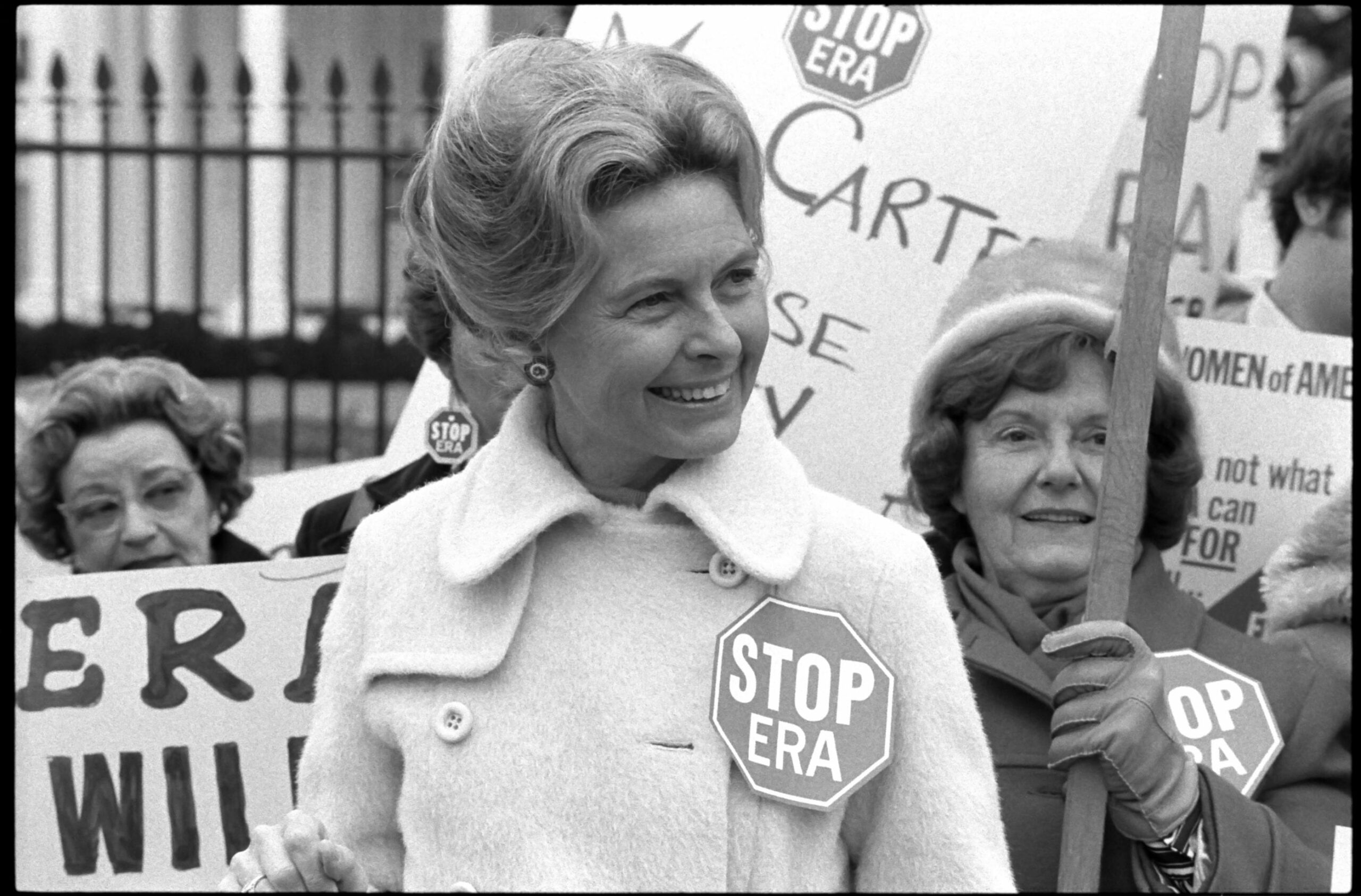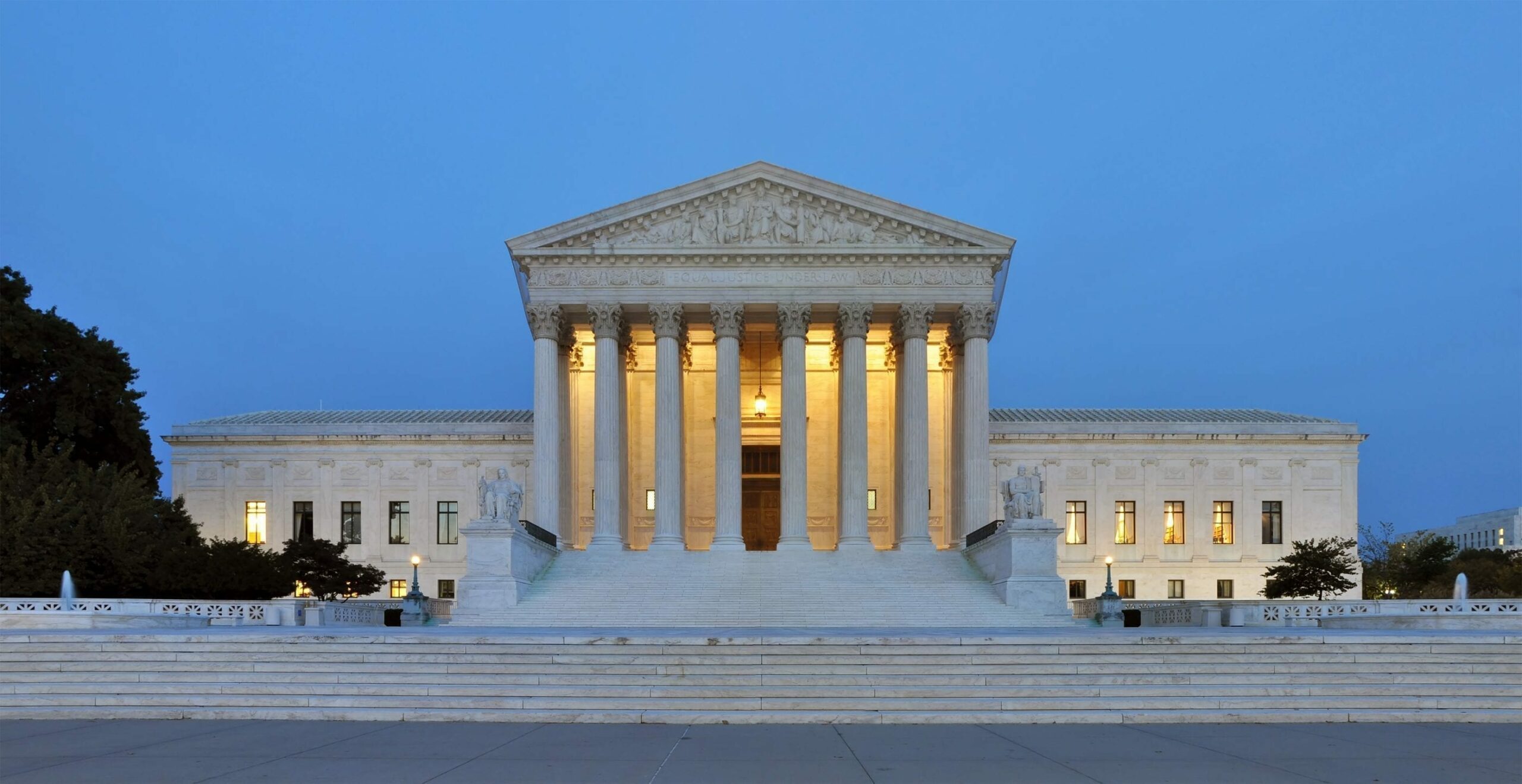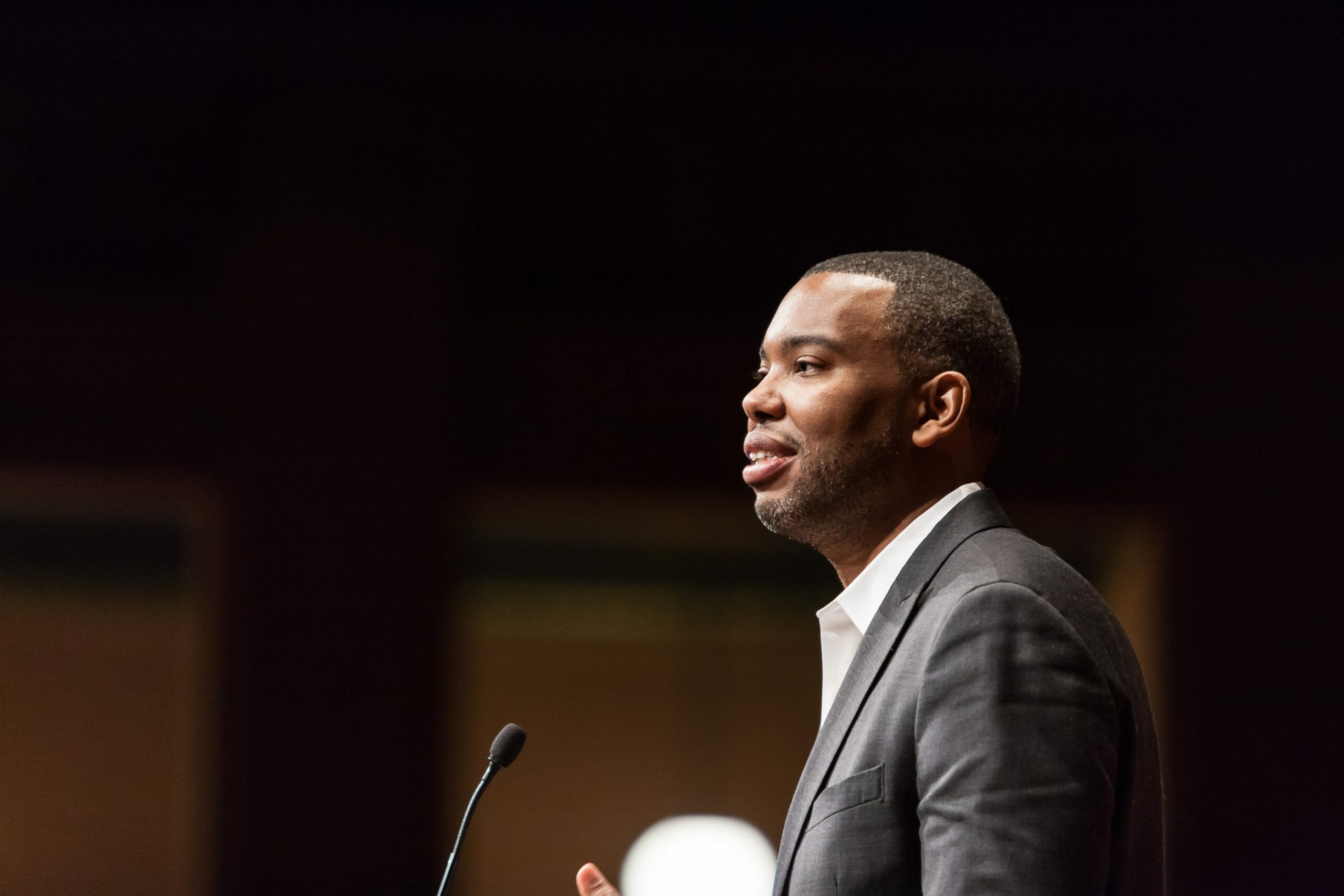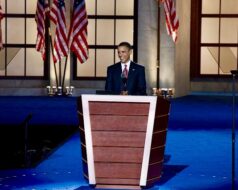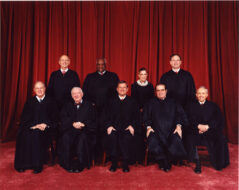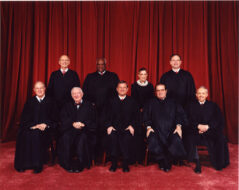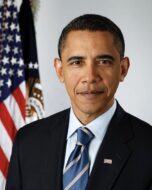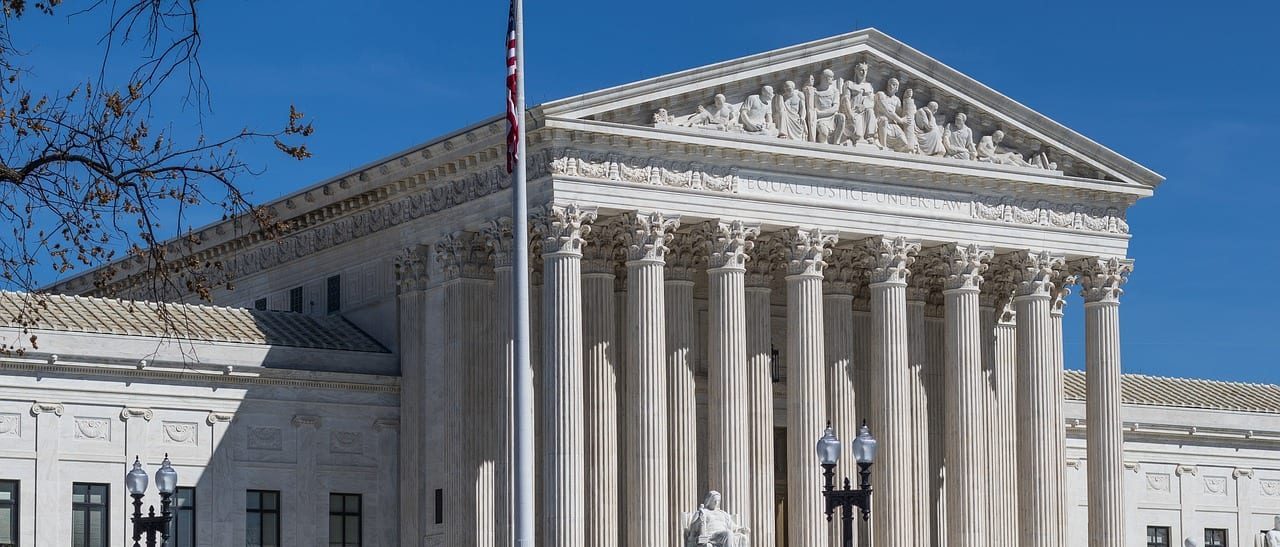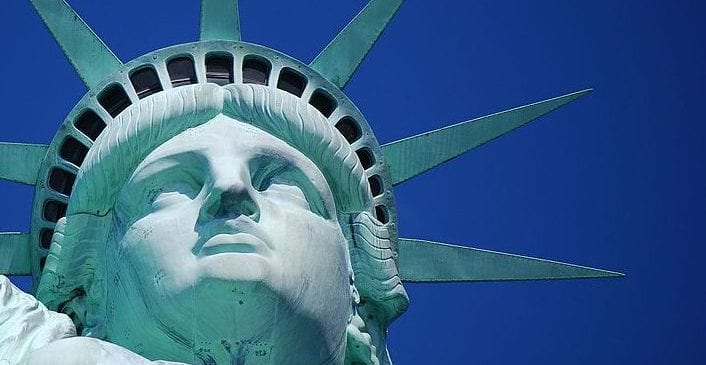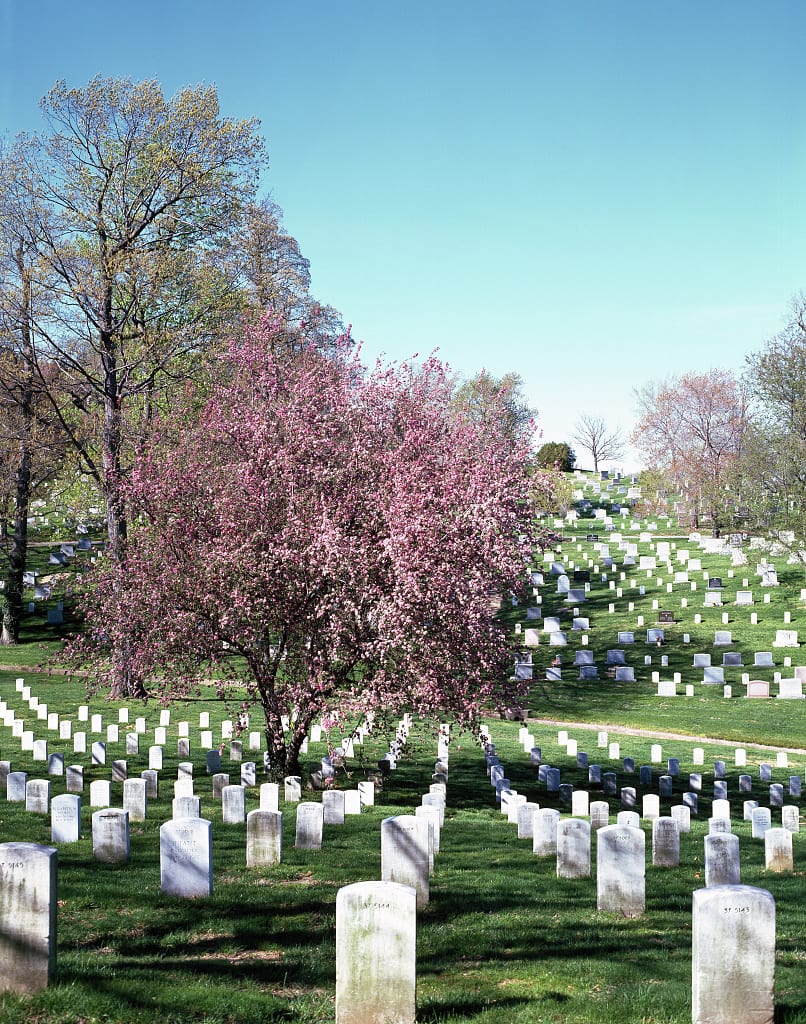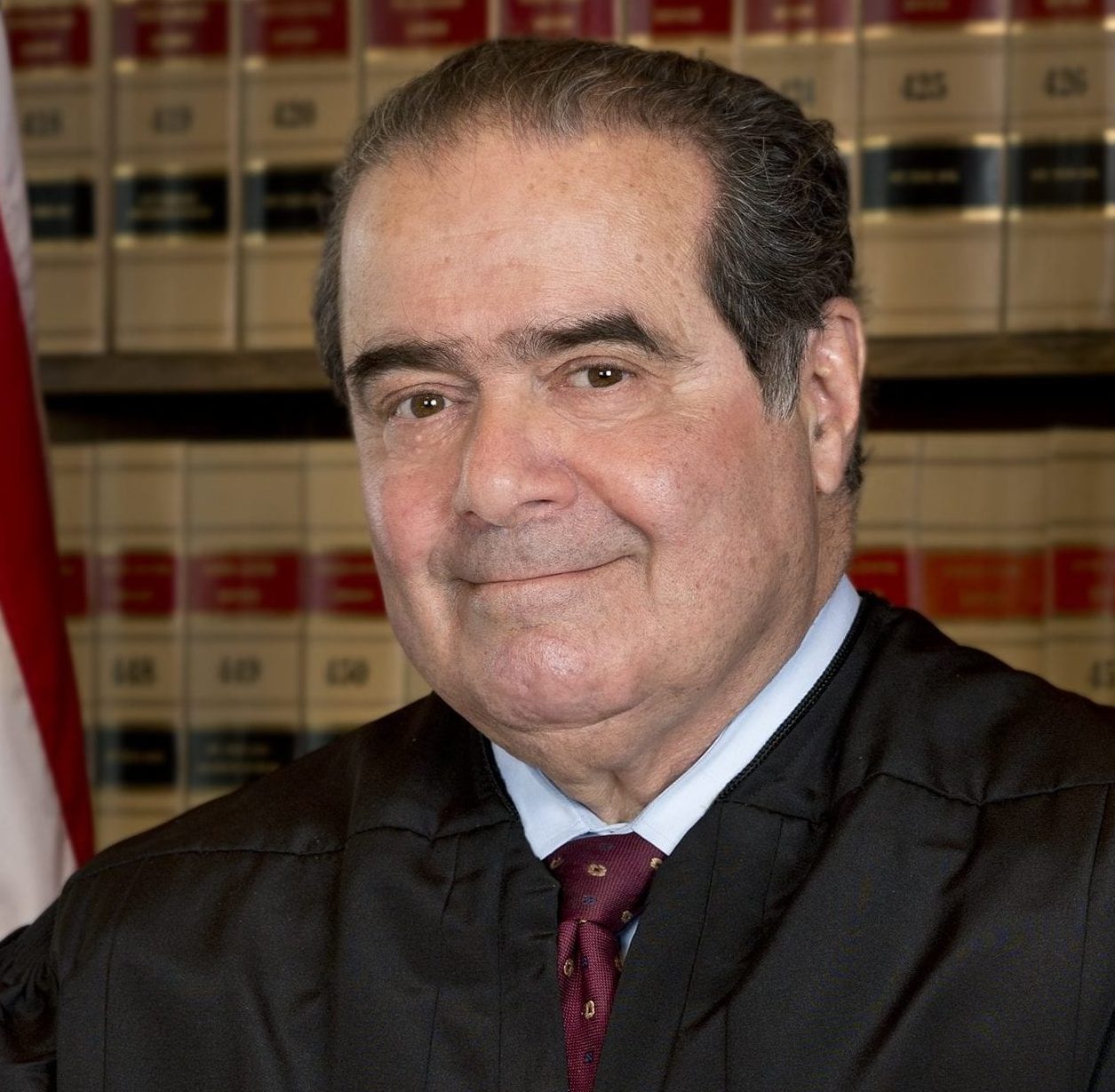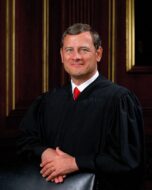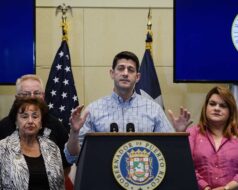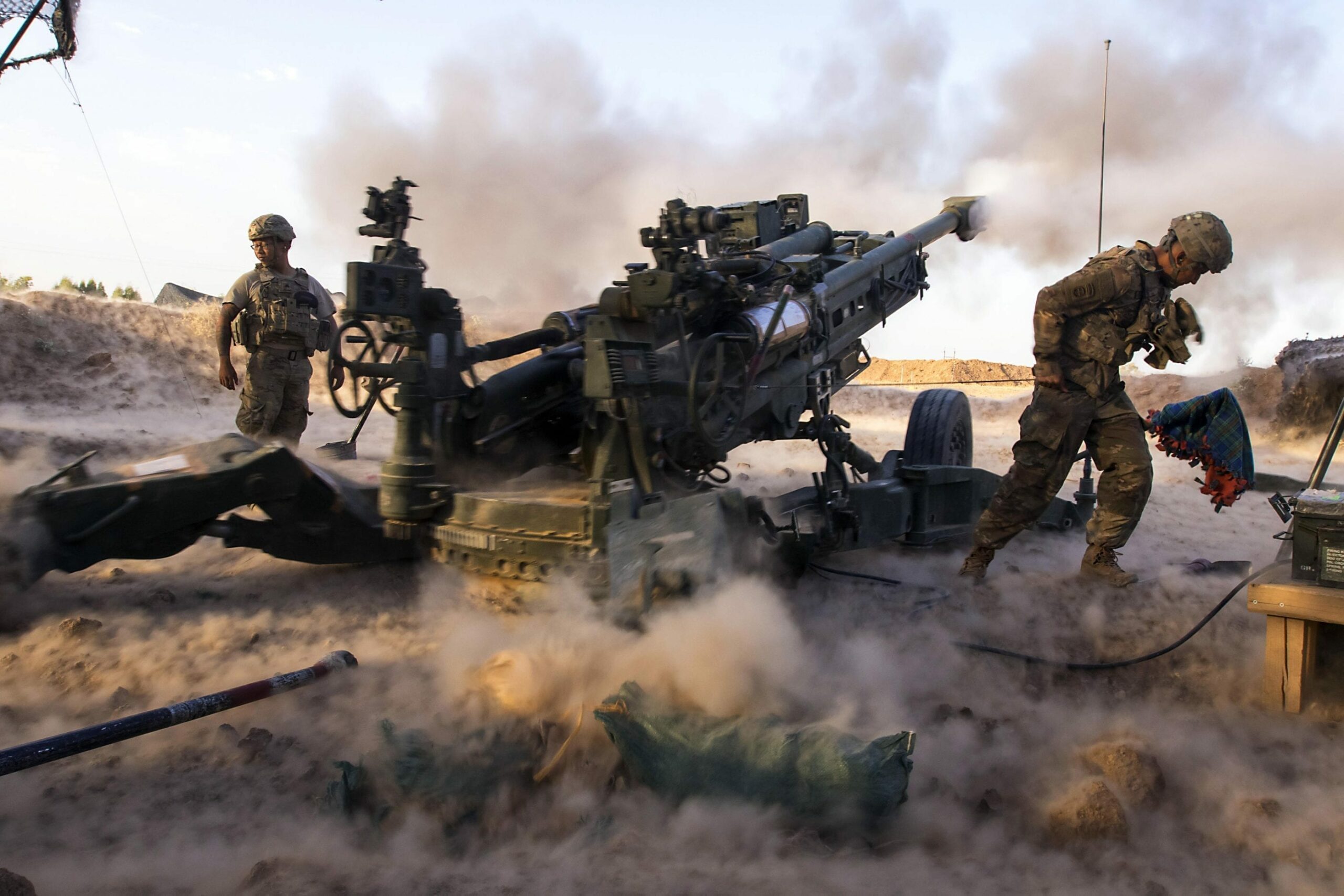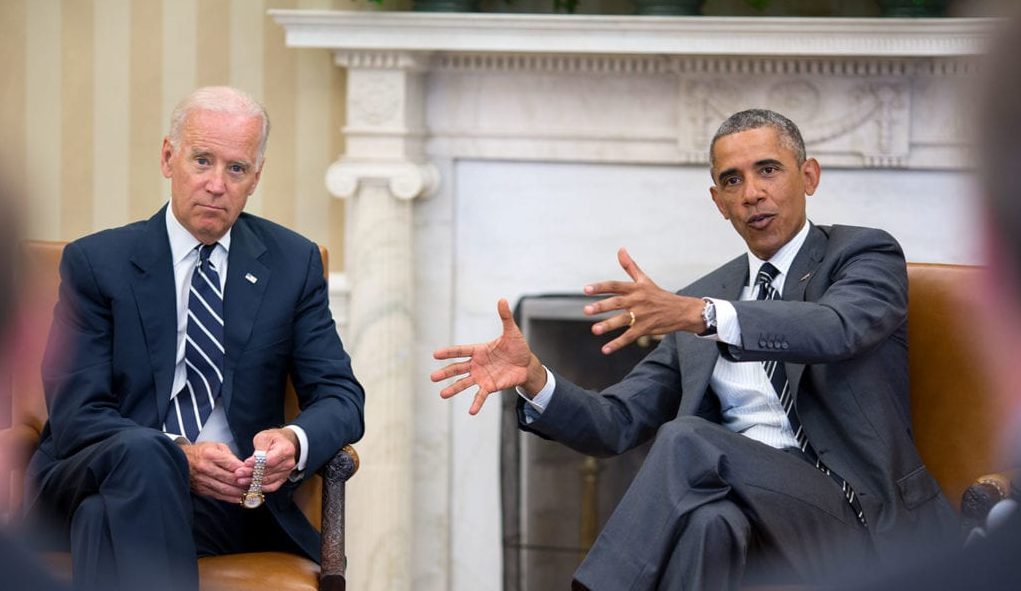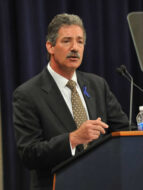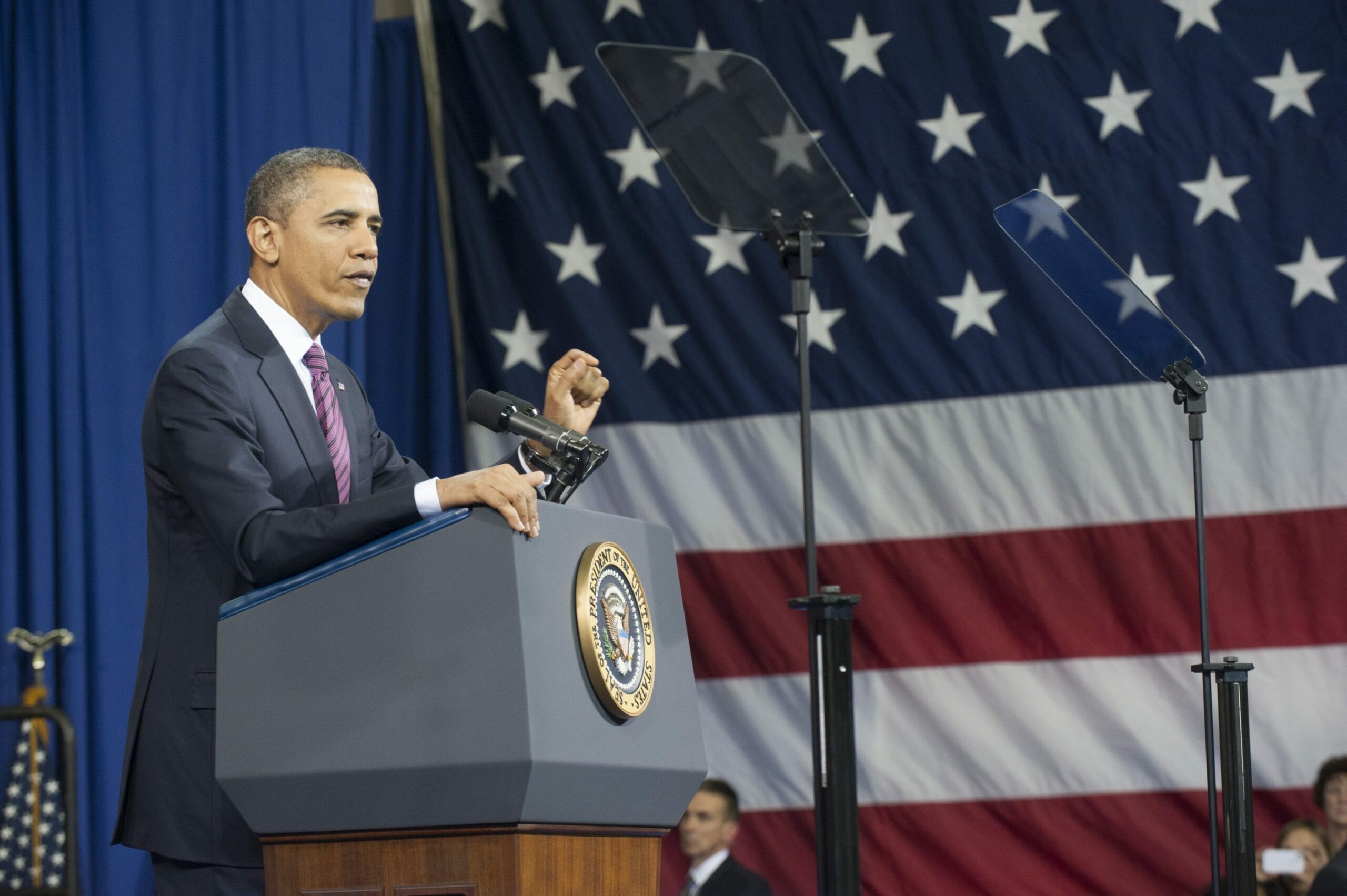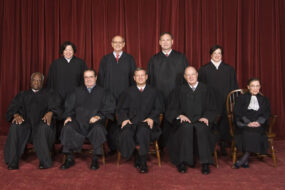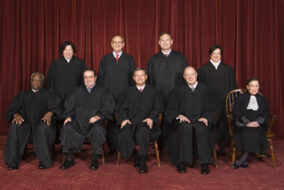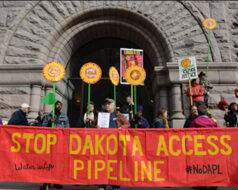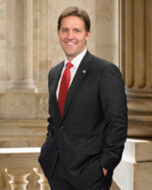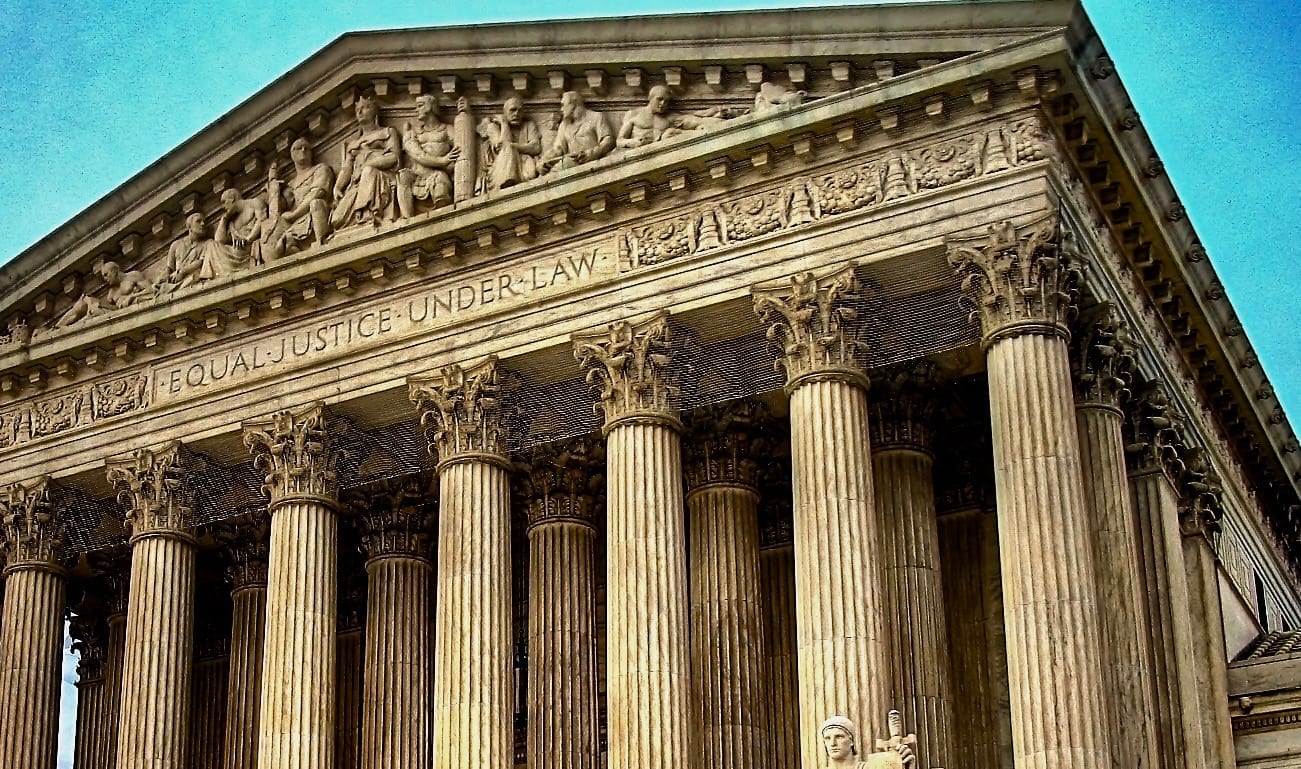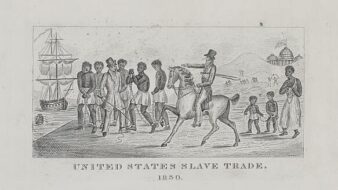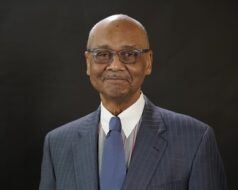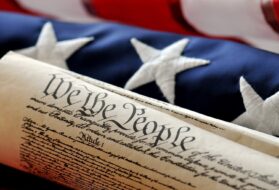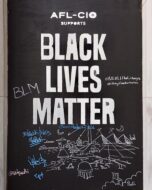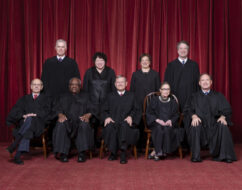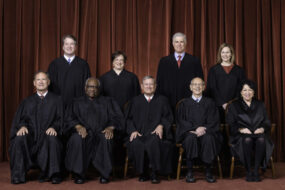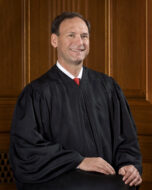

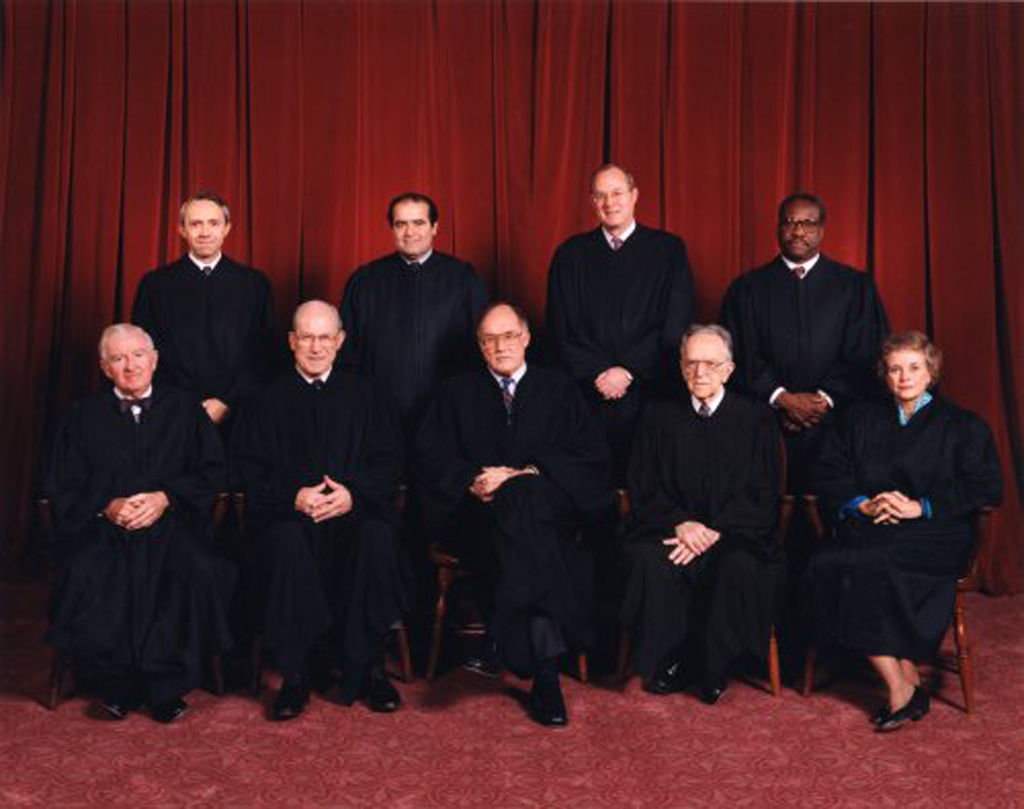
No related resources
Introduction
The Court expanded its earlier Establishment Clause school prayer doctrines beginning with Engel v. Vitale, to include Ten Commandments postings and many moments of silence in Wallace v. Jaffree and then, in a 5-4 vote, included graduation ceremonies in Lee v. Weisman. Justice David H. Souter’s concurring opinion took on Justice William H. Rehnquist’s dissent in Wallace. Justice Anthony Kennedy presented the facts of the case. Elaborating on that Rehnquist dissent, Justice Antonin Scalia’s dissent questioned the Court’s Establishment Clause jurisprudence and the Lemon test.
Source: 505 U.S. 577, https://www.law.cornell.edu/supremecourt/text/505/577. We include excerpts from Justice Kennedy’s opinion for the court, the concurring opinion of Justice Souter, and the dissent of Justice Scalia. Omitted is Justice Harry A. Blackmun’s dissent. Footnotes added by the editors are preceded by “Ed. note.”
Justice Kennedy delivered the opinion of the Court.
I.
A.
Deborah Weisman graduated from Nathan Bishop Middle School, a public school in Providence, [Rhode Island] at a formal ceremony in June 1989. She was about 14 years old. . . . The school principal, petitioner[1] Robert E. Lee, invited a rabbi to deliver prayers at the graduation exercises for Deborah’s class. Rabbi Leslie Gutterman, of the Temple Beth El in Providence, accepted. . . .
Rabbi Gutterman’s prayers were as follows:
INVOCATION
God of the Free, Hope of the Brave:
For the legacy of America where diversity is celebrated and the rights of minorities are protected, we thank You. May these young men and women grow up to enrich it.
For the liberty of America, we thank You. May these new graduates grow up to guard it.
For the political process of America in which all its citizens may participate, for its court system where all may seek justice we thank You. May those we honor this morning always turn to it in trust.
For the destiny of America we thank You. May the graduates of Nathan Bishop Middle School so live that they might help to share it.
May our aspirations for our country and for these young people, who are our hope for the future, be richly fulfilled.
AMEN
BENEDICTION
O God, we are grateful to You for having endowed us with the capacity for learning which we have celebrated on this joyous commencement.
Happy families give thanks for seeing their children achieve an important milestone. Send Your blessings upon the teachers and administrators who helped prepare them.
The graduates now need strength and guidance for the future, help them to understand that we are not complete with academic knowledge alone. We must each strive to fulfill what You require of us all: To do justly, to love mercy, to walk humbly.
We give thanks to You, Lord, for keeping us alive, sustaining us and allowing us to reach this special, happy occasion.
AMEN. . . .
. . . The parties stipulate that attendance at graduation ceremonies is voluntary. . . .
B.
. . . The district court held that petitioners’ practice of including invocations and benedictions in public school graduations violated the Establishment Clause of the First Amendment, and it enjoined petitioners from continuing the practice. . . . On appeal, the United States Court of Appeals for the First Circuit affirmed. . . . We granted certiorari[2] and now affirm.
II.
These dominant facts mark and control the confines of our decision: State officials direct the performance of a formal religious exercise at promotional and graduation ceremonies for secondary schools. Even for those students who object to the religious exercise, their attendance and participation in the state sponsored religious activity are in a fair and real sense obligatory, though the school district does not require attendance as a condition for receipt of the diploma. . . .
It is beyond dispute that, at a minimum, the Constitution guarantees that government may not coerce anyone to support or participate in religion or its exercise, or otherwise act in a way which “establishes a [state] religion or religious faith, or tends to do so.” Lynch.[3] The state’s involvement in the school prayers challenged today violates these central principles.
That involvement is as troubling as it is undenied. A school official, the principal, decided that an invocation and a benediction should be given; this is a choice attributable to the state, and from a constitutional perspective it is as if a state statute decreed that the prayers must occur. The principal chose the religious participant, here a rabbi, and that choice is also attributable to the state. The reason for the choice of a rabbi is not disclosed by the record, but the potential for divisiveness over the choice of a particular member of the clergy to conduct the ceremony is apparent. . . .
We are asked to recognize the existence of a practice of nonsectarian prayer, prayer within the embrace of what is known as the Judeo Christian tradition, prayer which is more acceptable than one which, for example, makes explicit references to the God of Israel, or to Jesus Christ, or to a patron saint. . . .
As we have observed before, there are heightened concerns with protecting freedom of conscience from subtle coercive pressure in the elementary and secondary public schools. We need not look beyond the circumstances of this case to see the phenomenon at work. The undeniable fact is that the school district’s supervision and control of a high school graduation ceremony places public pressure, as well as peer pressure, on attending students to stand as a group or, at least, maintain respectful silence during the Invocation and Benediction. This pressure, though subtle and indirect, can be as real as any overt compulsion. Of course, in our culture standing or remaining silent can signify adherence to a view or simple respect for the views of others. And no doubt some persons who have no desire to join a prayer have little objection to standing as a sign of respect for those who do. But for the dissenter of high school age, who has a reasonable perception that she is being forced by the state to pray in a manner her conscience will not allow, the injury is no less real. There can be no doubt that for many, if not most, of the students at the graduation, the act of standing or remaining silent was an expression of participation in the rabbi’s prayer. That was the very point of the religious exercise. It is of little comfort to a dissenter, then, to be told that for her the act of standing or remaining in silence signifies mere respect, rather than participation. What matters is that, given our social conventions, a reasonable dissenter in this milieu could believe that the group exercise signified her own participation or approval of it.
Finding no violation under these circumstances would place objectors in the dilemma of participating, with all that implies, or protesting. We do not address whether that choice is acceptable if the affected citizens are mature adults, but we think the state may not, consistent with the Establishment Clause, place primary and secondary school children in this position. Research in psychology supports the common assumption that adolescents are often susceptible to pressure from their peers towards conformity, and that the influence is strongest in matters of social convention. Brittain, Adolescent Choices and Parent Peer Cross Pressures, 28 Am. Sociological Rev. 385 (June 1963); Clasen & Brown, The Multidimensionality of Peer Pressure in Adolescence, 14 J. of Youth and Adolescence 451 (Dec. 1985); Brown, Clasen, & Eicher, Perceptions of Peer Pressure, Peer Conformity Dispositions, and Self Reported Behavior Among Adolescents, 22 Developmental Psychology 521 (July 1986).[4] To recognize that the choice imposed by the state constitutes an unacceptable constraint only acknowledges that the government may no more use social pressure to enforce orthodoxy than it may use more direct means. . . .
Justice Souter, with whom Justice Stevens and Justice O’Connor join, concurring.
Whatever else may define the scope of accommodation permissible under the Establishment Clause, one requirement is clear: accommodation must lift a discernible burden on the free exercise of religion. Concern for the position of religious individuals in the modern regulatory state cannot justify official solicitude for a religious practice unburdened by general rules; such gratuitous largesse would effectively favor religion over disbelief. By these lights one easily sees that, in sponsoring the graduation prayers at issue here, the state has crossed the line from permissible accommodation to unconstitutional establishment. . . .
Petitioners would deflect this conclusion by arguing that graduation prayers are no different from presidential religious proclamations and similar official “acknowledgments” of religion in public life. But religious invocations in Thanksgiving Day addresses and the like, rarely noticed, ignored without effort, conveyed over an impersonal medium, and directed at no one in particular, inhabit a pallid zone worlds apart from official prayers delivered to a captive audience of public school students and their families. Madison himself respected the difference between the trivial and the serious in constitutional practice. Realizing that his contemporaries were unlikely to take the Establishment Clause seriously enough to forgo a legislative chaplainship, he suggested that “[r]ather than let this step beyond the landmarks of power have the effect of a legitimate precedent, it will be better to apply to it the legal aphorism de minimis non curat lex. . . .”[5] But that logic permits no winking at the practice in question here. When public school officials, armed with the state’s authority, convey an endorsement of religion to their students, they strike near the core of the Establishment Clause. However “ceremonial” their messages may be, they are flatly unconstitutional.
Justice Scalia, with whom the Chief Justice, Justice White, and Justice Thomas join, dissenting.
Three terms ago, I joined an opinion recognizing that the Establishment Clause must be construed in light of the “[g]overnment policies of accommodation, acknowledgment, and support for religion [that] are an accepted part of our political and cultural heritage.” That opinion affirmed that “the meaning of the clause is to be determined by reference to historical practices and understandings.” It said that “[a] test for implementing the protections of the Establishment Clause that, if applied with consistency, would invalidate longstanding traditions cannot be a proper reading of the clause.” County of Allegheny v. American Civil Liberties Union, Greater Pittsburgh Chapter. These views of course prevent me from joining today’s opinion, which is conspicuously bereft of any reference to history. In holding that the Establishment Clause prohibits invocations and benedictions at public school graduation ceremonies, the Court—with nary a mention that it is doing so—lays waste a tradition that is as old as public school graduation ceremonies themselves, and that is a component of an even more longstanding American tradition of nonsectarian prayer to God at public celebrations generally. As its instrument of destruction, the bulldozer of its social engineering, the Court invents a boundless, and boundlessly manipulable, test of psychological coercion, which promises to do for the Establishment Clause what the Durham rule did for the insanity defense.[6] Today’s opinion shows more forcefully than volumes of argumentation why our nation’s protection, that fortress which is our Constitution, cannot possibly rest upon the changeable philosophical predilections of the justices of this Court, but must have deep foundations in the historic practices of our people.
I
Justice Holmes’ aphorism that “a page of history is worth a volume of logic,” New York Trust Co. v. Eisner, 256 U.S. 345, 349 (1921), applies with particular force to our Establishment Clause jurisprudence. . . .
The history and tradition of our nation are replete with public ceremonies featuring prayers of thanksgiving and petition. Illustrations of this point have been amply provided in our prior opinions, but since the Court is so oblivious to our history as to suggest that the Constitution restricts “preservation and transmission of religious beliefs . . . to the private sphere,”[7] it appears necessary to provide another brief account.
From our nation’s origin, prayer has been a prominent part of governmental ceremonies and proclamations. [There follows a 600 word history of such prayers.] . . .
In addition to this general tradition of prayer at public ceremonies, there exists a more specific tradition of invocations and benedictions at public school graduation exercises. . . .
II
The Court presumably would separate graduation invocations and benedictions from other instances of public “preservation and transmission of religious beliefs” on the ground that they involve “psychological coercion.” I find it a sufficient embarrassment that our Establishment Clause jurisprudence regarding holiday displays has come to “requir[e] scrutiny more commonly associated with interior decorators than with the judiciary.” American Jewish Congress v. Chicago, 827 F.2d 120, 129 (Easterbrook, J., dissenting). But interior decorating is a rock hard science compared to psychology practiced by amateurs. A few citations of “[r]esearch in psychology” that have no particular bearing upon the precise issue here, cannot disguise the fact that the Court has gone beyond the realm where judges know what they are doing. The Court’s argument that state officials have “coerced” students to take part in the invocation and benediction at graduation ceremonies is, not to put too fine a point on it, incoherent.
The Court identifies two “dominant facts” that it says dictate its ruling that invocations and benedictions at public school graduation ceremonies violate the Establishment Clause. Neither of them is in any relevant sense true.
A
The Court declares that students’ “attendance and participation in the [invocation and benediction] are in a fair and real sense obligatory.” But what exactly is this “fair and real sense”? According to the Court, students at graduation who want “to avoid the fact or appearance of participation” in the invocation and benediction are psychologically obligated by “public pressure, as well as peer pressure, . . . to stand as a group or, at least, maintain respectful silence” during those prayers. This assertion—the very linchpin of the Court’s opinion—is almost as intriguing for what it does not say as for what it says. It does not say, for example, that students are psychologically coerced to bow their heads, place their hands in a Dürer[8] like prayer position, pay attention to the prayers, utter “Amen,” or in fact pray. (Perhaps further intensive psychological research remains to be done on these matters.) It claims only that students are psychologically coerced “to stand . . . or, at least, maintain respectful silence” (emphasis added). Both halves of this disjunctive (both of which must amount to the fact or appearance of participation in prayer if the Court’s analysis is to survive on its own terms) merit particular attention.
To begin with the latter: The Court’s notion that a student who simply sits in “respectful silence” during the invocation and benediction (when all others are standing) has somehow joined—or would somehow be perceived as having joined—in the prayers is nothing short of ludicrous. We indeed live in a vulgar age. But surely “our social conventions” have not coarsened to the point that anyone who does not stand on his chair and shout obscenities can reasonably be deemed to have assented to everything said in his presence. Since the Court does not dispute that students exposed to prayer at graduation ceremonies retain (despite “subtle coercive pressures,”) the free will to sit, there is absolutely no basis for the Court’s decision. It is fanciful enough to say that “a reasonable dissenter,” standing head erect in a class of bowed heads, “could believe that the group exercise signified her own participation or approval of it.” It is beyond the absurd to say that she could entertain such a belief while pointedly declining to rise.
But let us assume the very worst, that the nonparticipating graduate is “subtly coerced” . . . to stand! Even that half of the disjunctive does not remotely establish a “participation” (or an “appearance of participation”) in a religious exercise. The Court acknowledges that “in our culture standing . . . can signify adherence to a view or simple respect for the views of others.” (Much more often the latter than the former, I think, except perhaps in the proverbial town meeting, where one votes by standing.) But if it is a permissible inference that one who is standing is doing so simply out of respect for the prayers of others that are in progress, then how can it possibly be said that a “reasonable dissenter . . . could believe that the group exercise signified her own participation or approval”? Quite obviously, it cannot. I may add, moreover, that maintaining respect for the religious observances of others is a fundamental civic virtue that government (including the public schools) can and should cultivate—so that even if it were the case that the displaying of such respect might be mistaken for taking part in the prayer, I would deny that the dissenter’s interest in avoiding even the false appearance of participation constitutionally trumps the government’s interest in fostering respect for religion generally.
The opinion manifests that the Court itself has not given careful consideration to its test of psychological coercion. For if it had, how could it observe, with no hint of concern or disapproval, that students stood for the Pledge of Allegiance, which immediately preceded Rabbi Gutterman’s invocation? The government can, of course, no more coerce political orthodoxy than religious orthodoxy West Virginia Board of Education v. Barnette.[9] Moreover, since the Pledge of Allegiance has been revised since Barnette to include the phrase “under God,” recital of the Pledge would appear to raise the same Establishment Clause issue as the invocation and benediction. If students were psychologically coerced to remain standing during the invocation, they must also have been psychologically coerced, moments before, to stand for (and thereby, in the Court’s view, take part in or appear to take part in) the Pledge. Must the Pledge therefore be barred from the public schools (both from graduation ceremonies and from the classroom)? In Barnette we held that a public school student could not be compelled to recite the Pledge; we did not even hint that she could not be compelled to observe respectful silence—indeed, even to stand in respectful silence—when those who wished to recite it did so. Logically, that ought to be the next project for the Court’s bulldozer.
I also find it odd that the Court concludes that high school graduates may not be subjected to this supposed psychological coercion, yet refrains from addressing whether “mature adults” may. I had thought that the reason graduation from high school is regarded as so significant an event is that it is generally associated with transition from adolescence to young adulthood. Many graduating seniors, of course, are old enough to vote. Why, then, does the Court treat them as though they were first graders? Will we soon have a jurisprudence that distinguishes between mature and immature adults? . . .
These distortions of the record are, of course, not harmless error: without them the Court’s solemn assertion that the school officials could reasonably be perceived to be “enforc[ing] a religious orthodoxy,” would ring as hollow as it ought.
III
The deeper flaw in the Court’s opinion does not lie in its wrong answer to the question whether there was state induced “peer pressure” coercion; it lies, rather, in the Court’s making violation of the Establishment Clause hinge on such a precious question. The coercion that was a hallmark of historical establishments of religion was coercion of religious orthodoxy and of financial support by force of law and threat of penalty. Typically, attendance at the state church was required; only clergy of the official church could lawfully perform sacraments; and dissenters, if tolerated, faced an array of civil disabilities. Thus, for example, in the colony of Virginia, where the Church of England had been established, ministers were required by law to conform to the doctrine and rites of the Church of England; and all persons were required to attend church and observe the Sabbath, were tithed for the public support of Anglican ministers, and were taxed for the costs of building and repairing churches.
The Establishment Clause was adopted to prohibit such an establishment of religion at the federal level (and to protect state establishments of religion from federal interference). I will further acknowledge for the sake of argument that, as some scholars have argued, by 1790 the term “establishment” had acquired an additional meaning—financial support of religion generally, by public taxation”—that reflected the development of “general or multiple” establishments, not limited to a single church. But that would still be an establishment coerced by force of law. And I will further concede that our constitutional tradition, from the Declaration of Independence and the first inaugural address of Washington, quoted earlier, down to the present day, has, with a few aberrations ruled out of order government sponsored endorsement of religion—even when no legal coercion is present, and indeed even when no ersatz, “peer pressure” psycho coercion is present—where the endorsement is sectarian, in the sense of specifying details upon which men and women who believe in a benevolent, omnipotent Creator and Ruler of the world, are known to differ (for example, the divinity of Christ). But there is simply no support for the proposition that the officially sponsored nondenominational invocation and benediction read by Rabbi Gutterman—with no one legally coerced to recite them—violated the Constitution of the United States. To the contrary, they are so characteristically American they could have come from the pen of George Washington or Abraham Lincoln himself.
Thus, while I have no quarrel with the Court’s general proposition that the Establishment Clause “guarantees that government may not coerce anyone to support or participate in religion or its exercise.” I see no warrant for expanding the concept of coercion beyond acts backed by threat of penalty—a brand of coercion that, happily, is readily discernible to those of us who have made a career of reading the disciples of Blackstone rather than of Freud. The Framers were indeed opposed to coercion of religious worship by the national government; but, as their own sponsorship of nonsectarian prayer in public events demonstrates, they understood that “[s]peech is not coercive; the listener may do as he likes.” American Jewish Congress v. Chicago, 827 F.2d at 132 (Easterbrook, J., dissenting).
This historical discussion places in revealing perspective the Court’s extravagant claim that the state has “for all practical purposes” and “in every practical sense,” compelled students to participate in prayers at graduation. Beyond the fact, stipulated to by the parties, that attendance at graduation is voluntary, there is nothing in the record to indicate that failure of attending students to take part in the invocation or benediction was subject to any penalty or discipline. Contrast this with, for example, the facts of Barnette: Schoolchildren were required by law to recite the Pledge of Allegiance; failure to do so resulted in expulsion, threatened the expelled child with the prospect of being sent to a reformatory for criminally inclined juveniles, and subjected his parents to prosecution (and incarceration) for causing delinquency. To characterize the “subtle coercive pressures,” allegedly present here as the “practical” equivalent of the legal sanctions in Barnette is . . . well, let me just say it is not a “delicate and fact sensitive” analysis.
The Court relies on our “school prayer” cases. But whatever the merit of those cases, they do not support, much less compel, the Court’s psycho journey. In the first place, Engel and Schempp[10] do not constitute an exception to the rule, distilled from historical practice, that public ceremonies may include prayer; rather, they simply do not fall within the scope of the rule (for the obvious reason that school instruction is not a public ceremony). Second, we have made clear our understanding that school prayer occurs within a framework in which legal coercion to attend school (i.e., coercion under threat of penalty) provides the ultimate backdrop. . . .
IV
Our Religion Clause jurisprudence has become bedeviled (so to speak) by reliance on formulaic abstractions that are not derived from, but positively conflict with, our long accepted constitutional traditions. Foremost among these has been the so called Lemon test.[11] The Court today demonstrates the irrelevance of Lemon by essentially ignoring it, and the interment of that case may be the one happy byproduct of the Court’s otherwise lamentable decision. Unfortunately, however, the Court has replaced Lemon with its psycho coercion test, which suffers the double disability of having no roots whatever in our people’s historic practice, and being as infinitely expandable as the reasons for psychotherapy itself.
Another happy aspect of the case is that it is only a jurisprudential disaster and not a practical one. Given the odd basis for the Court’s decision, invocations and benedictions will be able to be given at public school graduations next June, as they have for the past century and a half, so long as school authorities make clear that anyone who abstains from screaming in protest does not necessarily participate in the prayers. All that is seemingly needed is an announcement, or perhaps a written insertion at the beginning of the graduation program, to the effect that, while all are asked to rise for the invocation and benediction, none is compelled to join in them, nor will be assumed, by rising, to have done so. That obvious fact recited, the graduates and their parents may proceed to thank God, as Americans have always done, for the blessings He has generously bestowed on them and on their country.
. . .
The reader has been told much in this case about the personal interest of Mr. Weisman and his daughter, and very little about the personal interests on the other side. They are not inconsequential. Church and state would not be such a difficult subject if religion were, as the Court apparently thinks it to be, some purely personal avocation that can be indulged entirely in secret, like pornography, in the privacy of one’s room. For most believers it is not that, and has never been. Religious men and women of almost all denominations have felt it necessary to acknowledge and beseech the blessing of God as a people, and not just as individuals, because they believe in the “protection of divine Providence,” as the Declaration of Independence put it, not just for individuals but for societies; because they believe God to be, as Washington’s first Thanksgiving Proclamation put it, the “Great Lord and Ruler of Nations.” One can believe in the effectiveness of such public worship, or one can deprecate and deride it. But the longstanding American tradition of prayer at official ceremonies displays with unmistakable clarity that the Establishment Clause does not forbid the government to accommodate it.
The narrow context of the present case involves a community’s celebration of one of the milestones in its young citizens’ lives, and it is a bold step for this Court to seek to banish from that occasion, and from thousands of similar celebrations throughout this land, the expression of gratitude to God that a majority of the community wishes to make. The issue before us today is not the abstract philosophical question whether the alternative of frustrating this desire of a religious majority is to be preferred over the alternative of imposing “psychological coercion,” or a feeling of exclusion, upon nonbelievers. Rather, the question is whether a mandatory choice in favor of the former has been imposed by the United States Constitution. As the age old practices of our people show, the answer to that question is not at all in doubt.
I must add one final observation: The founders of our republic knew the fearsome potential of sectarian religious belief to generate civil dissension and civil strife. And they also knew that nothing, absolutely nothing, is so inclined to foster among religious believers of various faiths a toleration—no, an affection—for one another than voluntarily joining in prayer together, to the God whom they all worship and seek. Needless to say, no one should be compelled to do that, but it is a shame to deprive our public culture of the opportunity, and indeed the encouragement, for people to do it voluntarily. The Baptist or Catholic who heard and joined in the simple and inspiring prayers of Rabbi Gutterman on this official and patriotic occasion was inoculated from religious bigotry and prejudice in a manner that can not be replicated. To deprive our society of that important unifying mechanism, in order to spare the nonbeliever what seems to me the minimal inconvenience of standing or even sitting in respectful nonparticipation, is as senseless in policy as it is unsupported in law.
- 1. Ed. note: a person who makes a formal application to a court for a writ, judicial action in a suit, etc.
- 2. Ed. note: A Latin word meaning “to be informed” or “we wish to be informed,” certiorari is an order of a higher court to review a lower court decision. “Certiorari” was the first word of such orders when they were written in Latin.

Conversation-based seminars for collegial PD, one-day and multi-day seminars, graduate credit seminars (MA degree), online and in-person.



